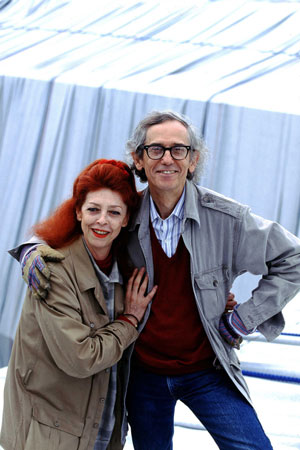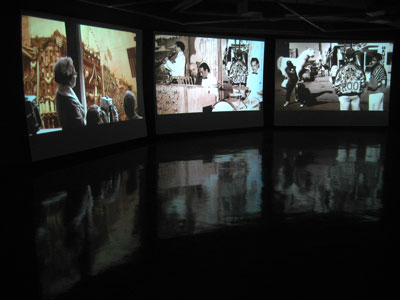By Beth Capper
 Artist Jeanne-Claude Denat de Guillebon died on Friday November 20, the result of a brain aneurism after a fall. She was 74-years old. The story of Jeanne-Claude and her husband and artistic partner Christo is much like a fairytale: born on the same day in different countries (Jeanne-Claude in Morocco and Christo in Bulgaria), the two came together after Jeanne-Claude’s mother picked up Christo, then a young struggling refugee in Paris, to paint her portrait. Soon thereafter, they ran away together, much to the chagrin of Jeanne-Claude’s parents. If we halt cynicism for a moment and consider the possibility that some of us are destined to come together in this world, Jeanne-Claude and Christo’s meeting is strikingly serendipitous. The pair would go on to collaboratively create some of the most ambitious and awe-inspiring large-scale environmental art works ever seen. Works, which, as comments from both of them suggest, were only possible because of their union.
Artist Jeanne-Claude Denat de Guillebon died on Friday November 20, the result of a brain aneurism after a fall. She was 74-years old. The story of Jeanne-Claude and her husband and artistic partner Christo is much like a fairytale: born on the same day in different countries (Jeanne-Claude in Morocco and Christo in Bulgaria), the two came together after Jeanne-Claude’s mother picked up Christo, then a young struggling refugee in Paris, to paint her portrait. Soon thereafter, they ran away together, much to the chagrin of Jeanne-Claude’s parents. If we halt cynicism for a moment and consider the possibility that some of us are destined to come together in this world, Jeanne-Claude and Christo’s meeting is strikingly serendipitous. The pair would go on to collaboratively create some of the most ambitious and awe-inspiring large-scale environmental art works ever seen. Works, which, as comments from both of them suggest, were only possible because of their union.
Among some of the most striking works Christo and Jeanne-Claude orchestrated were “Valley Curtain” in 1973, where the pair hung a massive orange curtain between two Colorado Mountains; “Islands” in 1986, where eleven scrub pine Islands in Florida were surrounded by 6.5 million square feet of bright pink fabric; and in 1986, “Umbrellas,” where sites in rural Japan and in the rolling hills of Southern California were covered in thousands of blue and yellow umbrellas, unfurled for all to see.
Jeanne-Claude and Christo worked for over five years with New York documentary veteran Albert Maysles to document a number of their projects. These films show intimately the couple’s collaborative process – one that was fuelled by argument as much as by love and respect. In the words of Jeanne-Claude herself: “We are terribly argumentative and scream and criticize each other non-stop. It is very helpful. It makes us think.”






